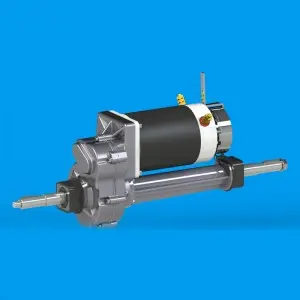Your vehicle’s transaxle plays a vital role in transferring power from the engine to the wheels, allowing your car to drive smoothly. However, like any mechanical component, transaxles can develop problems over time. In this blog, we’ll discuss the signs you should look out for to determine if your transaxle is starting to fail. By identifying these symptoms early, you can address the problem promptly and avoid potentially expensive repairs or even breakdowns.
1. Strange sounds:
The first sign that the transaxle may be failing is the presence of unusual noises. Whether it’s a high-pitched whine, clunking, or grinding sound, these could indicate internal damage or worn gears within the transaxle. Be aware of any sounds made during your shift or while the vehicle is in motion. If you notice anything unusual, it is recommended to have your transaxle inspected by a professional mechanic.
2. Transmission slipping:
Transmission slippage is a common symptom of transaxle failure. If your vehicle shifts unexpectedly on its own, or fails to accelerate properly even when the accelerator pedal is depressed, this indicates a problem with the transaxle’s ability to transfer power efficiently. Other signs of slippage include delayed engagement when changing gears or a sudden loss of power while driving.
3. Difficulty changing gears:
When your transaxle starts to go bad, you may have trouble shifting gears smoothly. You may experience hesitation, grinding, or resistance when changing gears, especially from Park to Drive or Reverse. Slow shifting could indicate internal damage, worn clutch plates, or a transmission fluid leak, all of which require immediate attention.
4. Transmission oil leakage:
A clear red or brown fluid called transmission fluid is critical to the proper operation of the transaxle. If you notice a pool of fluid underneath your vehicle, this could indicate a leak in the transaxle system, which could be caused by worn seals, loose bolts, or a damaged gasket. A leak can cause the fluid level to drop, causing poor lubrication and ultimately damaging the transaxle. Check regularly for leaks and consult a professional if you suspect a problem.
5. Burning smell:
A burning smell while driving is another red flag that the transaxle may be failing. This smell may be caused by overheating of the transmission fluid due to excessive friction or clutch slippage. Ignoring this smell can have serious consequences, as it can cause irreversible damage to your transaxle, requiring expensive repairs or even complete replacement.
Knowing the signs of transaxle failure is critical to maintaining the performance and longevity of your vehicle. By paying attention to strange noises, transmission slippage, difficulty shifting, fluid leaks, and burning smells, you can detect potential problems early and seek professional help promptly. Remember, regular maintenance and timely repairs are key to keeping your transaxle healthy and ensuring a safe and smooth driving experience. If you suspect any problems with your vehicle’s transaxle, consult a certified mechanic for a detailed inspection and necessary repairs.
Post time: Nov-24-2023


